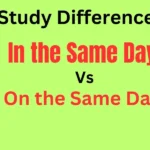Expressing gratitude in communication is more than just a polite gesture; it reflects our appreciation and respect for others. In professional and personal correspondence, phrases like “Many Thanks” often come up. But is “Many Thanks” truly the best way to convey gratitude?
This comprehensive guide will delve into the etiquette of using “Many Thanks,” analyze its grammatical correctness, explore alternatives, and provide insights into how different cultures express gratitude.
The Etiquette of Email Sign-Offs
Understanding Email Sign-Offs
Email sign-offs are crucial in setting the tone of your correspondence. They help establish a relationship with the recipient and can reflect your level of professionalism or friendliness. Common sign-offs include:
- Sincerely: Used in formal correspondence.
- Best Regards: Neutral and professional.
- Kind Regards: Slightly warmer than “Best Regards.”
- Warm Regards: More personal and friendly.
The Role of “Many Thanks”
“Many Thanks” is a popular choice, especially in informal and semi-formal emails. It’s a way to express heartfelt gratitude without being overly effusive. Here’s how it compares with other sign-offs:
- “Many Thanks” vs. “Best Regards”: “Many Thanks” is more specific in showing appreciation, whereas “Best Regards” is a general sign-off.
- “Many Thanks” vs. “Sincerely”: “Sincerely” is more formal and often used in formal letters, while “Many Thanks” adds a personal touch of gratitude.
When to Use “Many Thanks”
- Appropriate Situations: Use “Many Thanks” when you want to acknowledge someone’s help or support in a friendly manner.
- Inappropriate Situations: Avoid using it in highly formal business communications where more formal sign-offs like “Sincerely” might be preferable.
Grammatical Analysis of “Many Thanks”
Understanding “Many” as a Determiner
In English grammar, “many” is a determiner used with countable nouns to indicate a large number. For instance:
- Correct Usage: “Many people attended the conference.”
- “Many Thanks”: Here, “many” is used to emphasize the abundance of gratitude. Though “thanks” is uncountable in nature, “many” is employed for emphasis, making the phrase idiomatic rather than strictly grammatical.
Correct Usage
“Many Thanks” is grammatically acceptable in modern usage, though it might initially seem contradictory. It’s a well-accepted idiom used to convey a generous amount of gratitude.
Grammar Myths vs. Modern Usage
Common Misconceptions
- Myth: “Many Thanks” is grammatically incorrect because “many” should not be used with uncountable nouns.
- Reality: While “many” is typically used with countable nouns, its use with “thanks” has become idiomatic, reflecting common English usage.
Evolution of Usage
Language evolves over time, and “Many Thanks” has adapted to contemporary communication. Modern usage often bends traditional grammar rules to reflect more natural expressions of speech.
Historical Perspective: From “Thank” to “Thanks”
Historical Usage of Gratitude Expressions
Expressions of gratitude have evolved significantly. Early English used forms like “I thank thee” in a more formal manner. Over time, phrases like “thanks” became more common due to their simplicity and ease of use.
Transition from “Thank” to “Thanks”
- Historical Shift: The shift from “thank” to “thanks” reflects a move towards more casual and conversational language.
- Modern Usage: “Many Thanks” emerged as a way to express a greater depth of gratitude, aligning with more informal and friendly communication styles.
Alternatives to “Many Thanks” in Correspondence
Common Alternatives
Here are some alternatives to “Many Thanks” that you might consider using:
- “Thank You Very Much”: A straightforward and clear expression of gratitude.
- “Thanks a Lot”: Informal and warm, suitable for casual emails.
- “I Appreciate It”: Acknowledges the specific action and shows appreciation.
When to Use Each Alternative
- Formal Settings: Use “Thank You Very Much” or “I Appreciate It” in professional contexts.
- Informal Settings: “Thanks a Lot” or simply “Thanks” works well in casual conversations.
Cross-Language and Cultural Perspectives on Gratitude
Expressions of Gratitude in Different Languages
Gratitude is expressed differently across languages and cultures:
- Spanish: “Muchas Gracias” (Many Thanks)
- French: “Merci Beaucoup” (Thank You Very Much)
- German: “Vielen Dank” (Many Thanks)
Cultural Nuances
- In Japan: “Arigatou Gozaimasu” is a polite way to say thank you.
- In China: “Xièxiè” is commonly used, with various levels of formality depending on the context.
Understanding these variations can help you adapt your expressions of gratitude when interacting with people from different cultural backgrounds.
Creative Expressions Beyond “Many Thanks”
Innovative Ways to Show Appreciation
Consider using these creative ways to express gratitude:
- Personalized Messages: Tailor your thanks to reflect the specific action or support received.
- Acknowledgment of Effort: “Your help was invaluable, and I’m genuinely grateful.”
- Written Notes: A handwritten thank-you note can make a lasting impression.
Contextual Suitability
- Professional Context: Stick to standard phrases like “Thank You Very Much” for formal communications.
- Personal Context: Feel free to get creative with personalized messages or handwritten notes.
Conclusion
In summary, “Many Thanks” is a widely accepted and appropriate way to express gratitude in various contexts, though it’s important to consider the formality of your communication. Understanding grammatical nuances, historical shifts, and cultural differences can enhance how you convey your appreciation. Whether you choose to use “Many Thanks” or one of its alternatives, the key is to ensure your expression of gratitude feels genuine and fitting for the situation.
Additional Resources
For further reading on email etiquette and expressions of gratitude:
- Grammarly’s Guide to Email Sign-Offs
- The Balance Careers: Professional Email Sign-Offs
- Merriam-Webster’s Dictionary
Feel free to explore these resources to refine your understanding and practice of effective communication.
This detailed guide should provide a thorough understanding of using “Many Thanks” and its alternatives in various contexts, supported by historical, grammatical, and cultural insights.

Sophie Mitchell, a seasoned English educator, brings her passion for language and years of teaching expertise to TalkSpeaker. With a knack for simplifying grammar and expanding vocabulary, she empowers learners to master English with confidence.




